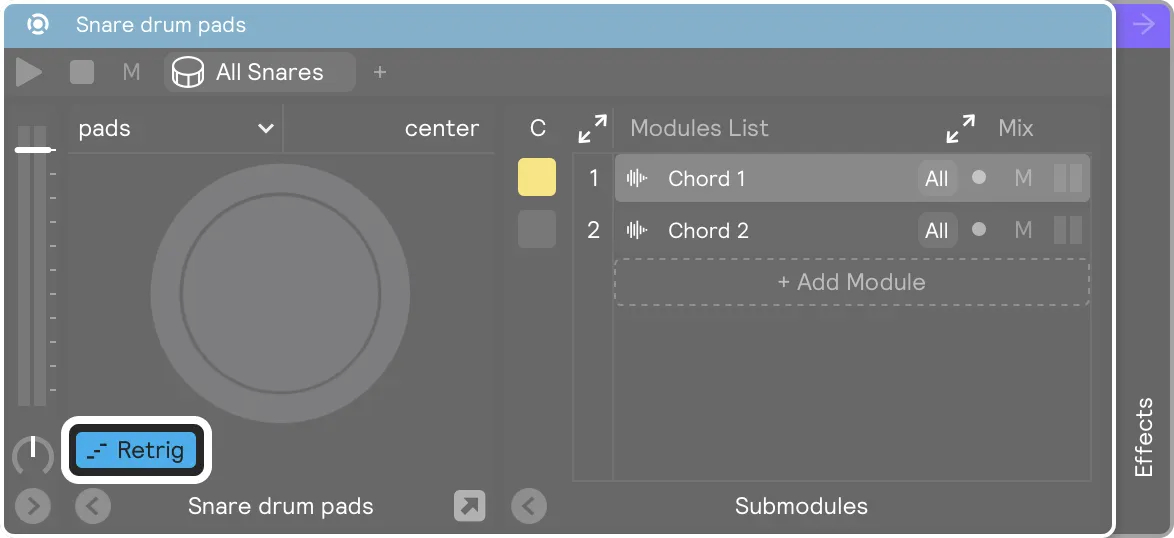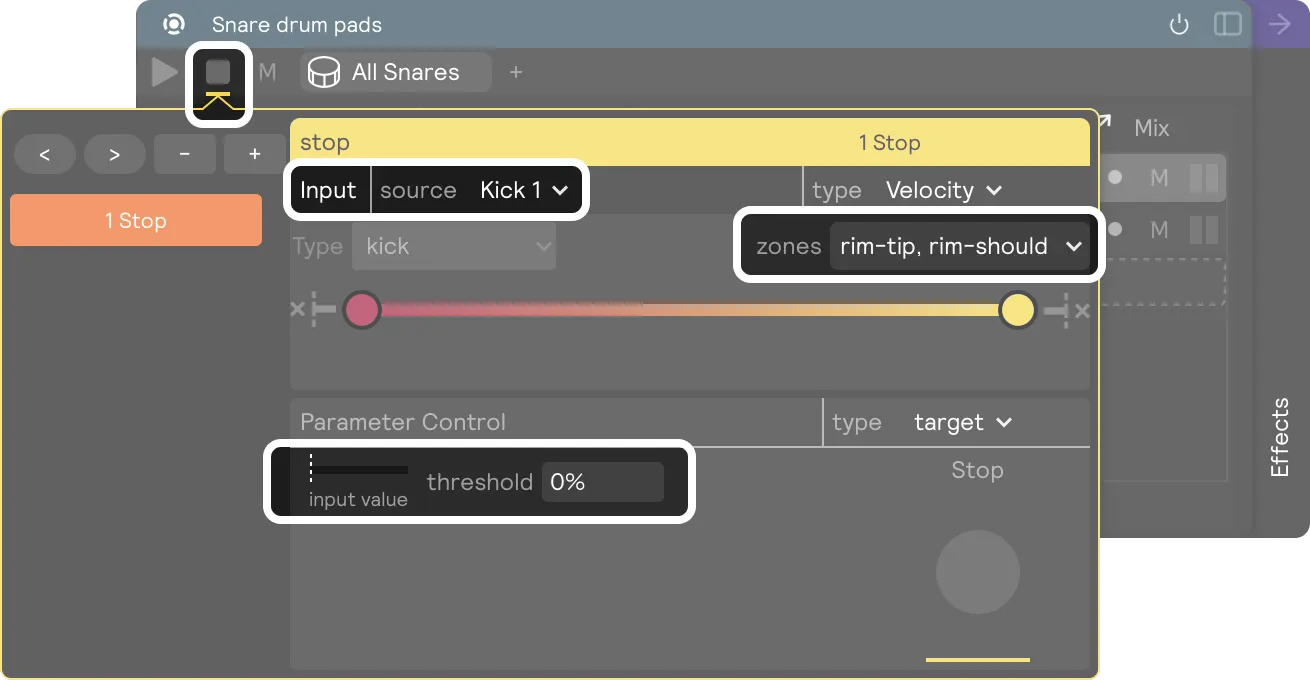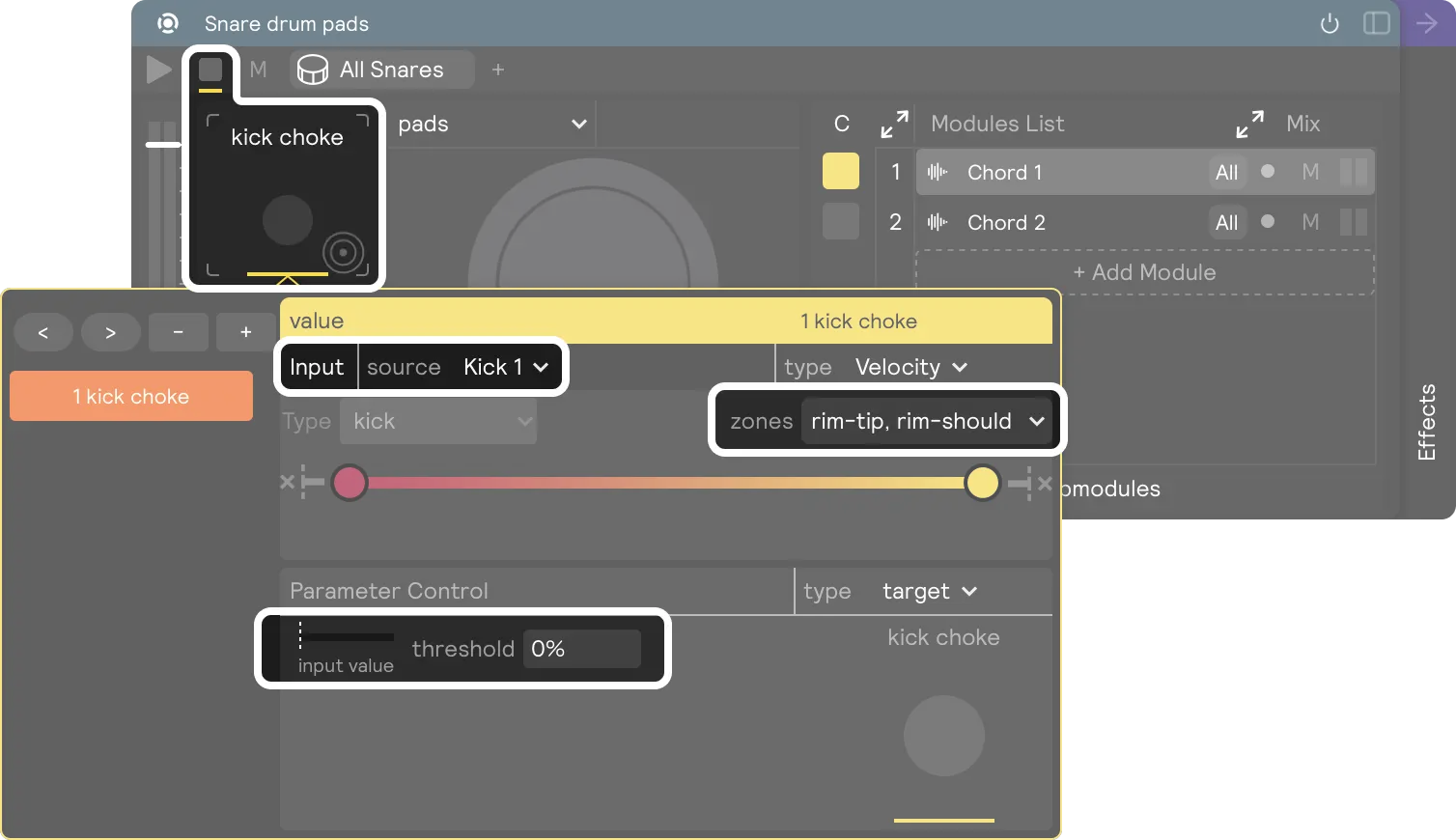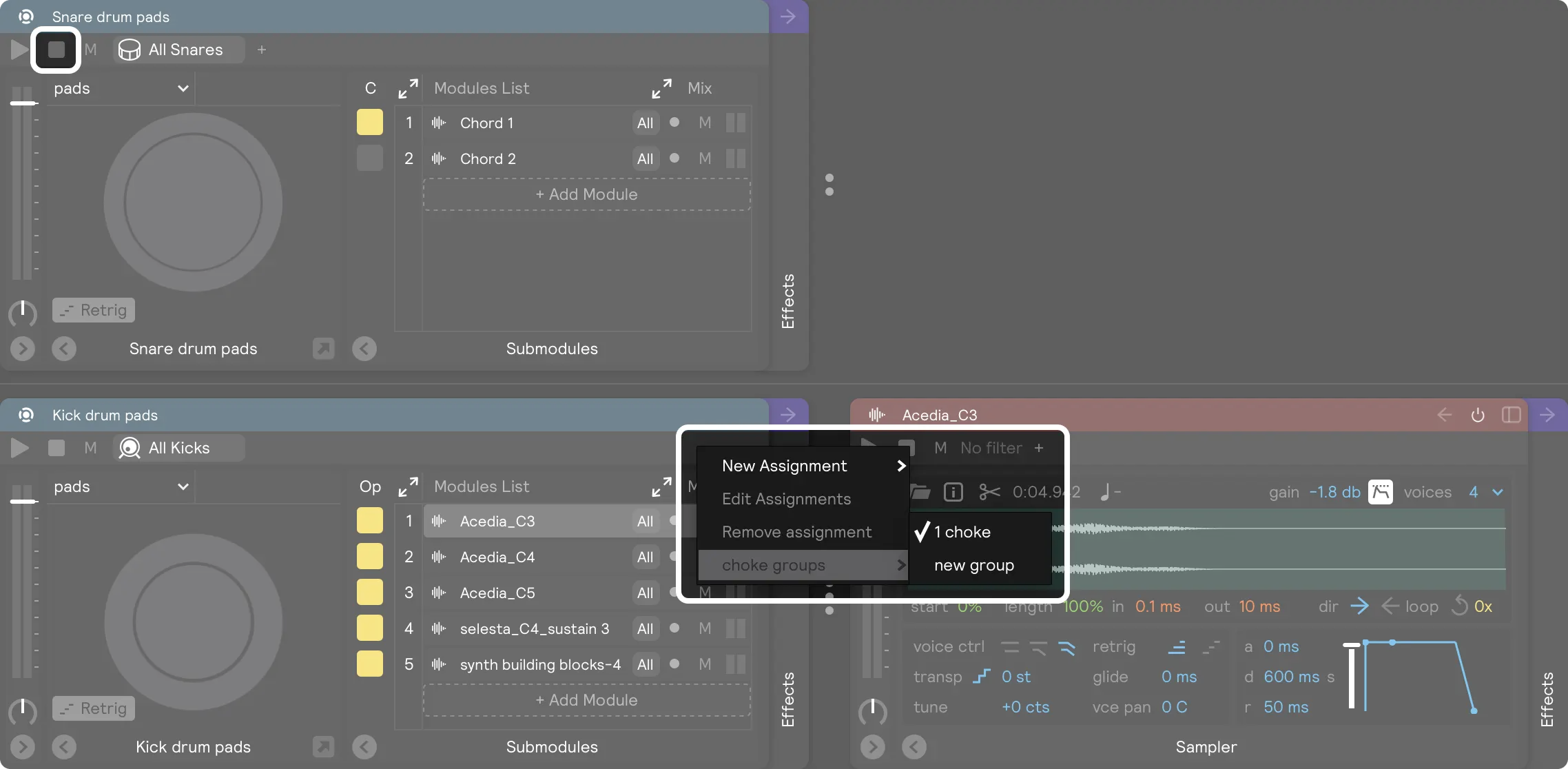How to Choke Sounds
Using the 'Retrig' button
The easiest and most common usecase is to just activate Retrig (Retrigger) on the module.
In the screenshot below, Chord 1 and Chord 2 modules are assigned to the drum head and drum rim, respectively, and since Retrig is turned on, they will naturally choke each other.

This will work in any controller, not just Drum Pads, and it will even work if you don't have generators producing sounds on some of the modules.
For example, in the screenshot above, the Chord 2 sampler could be deleted and rim would still choke Chord 1.
But this will only work with child modules of the module set to retrig. Read further for choking sounds across different layers.
Using zone-specific velocity assignments on the stop button
Sometimes you might want to have a zone from a different drum choke the sound. In this case it might not work to use retrig, which only works within the same layer. So you could add a velocity assignment from a zone on one drum to the stop button of a layer filtered by another input.

Adjust the threshold of the assignment to your taste -- you may want 0%, which means that even tapping the zone accidentally could initiate the choke. Or you you may want 25% or higher, if you only want strong hits to engage the assignment.

For more visual clarity, you can add the zone assingment to a labeled target macro, and -- in turn -- assign that target macro to the stop button. This could be a helpful reminder that there is a choke set, and which zone/s are involved.
Using the Global Choke Button
In the top right of Sensory Percussion 2's app frame, there is a Global Stop button. Just like above, you could use a zone-specific velocity assignment, or learn a button from a MIDI device to that button.
Only use this method to choke your sounds if you want a zone or MIDI controller to choke every sound in EVERY single set in your session. Otherwise, you should use one of the other methods outlined in this article.
Choke groups
With V2, the usecases for creating official choke groups are diminished -- the methods described above are more efficient -- but there are certainly some usecases.
To create a choke group, right-click on an module's stop button and create/select a choke group. Any module that is a member of a choke group will choke any other module in the same group.
For example, you might have a module buried inside a sequencer that you want to choke a module on a different layer -- and you only want that specific module to activate the choke: not the zone/s you are using to trigger that module, the module itself.
